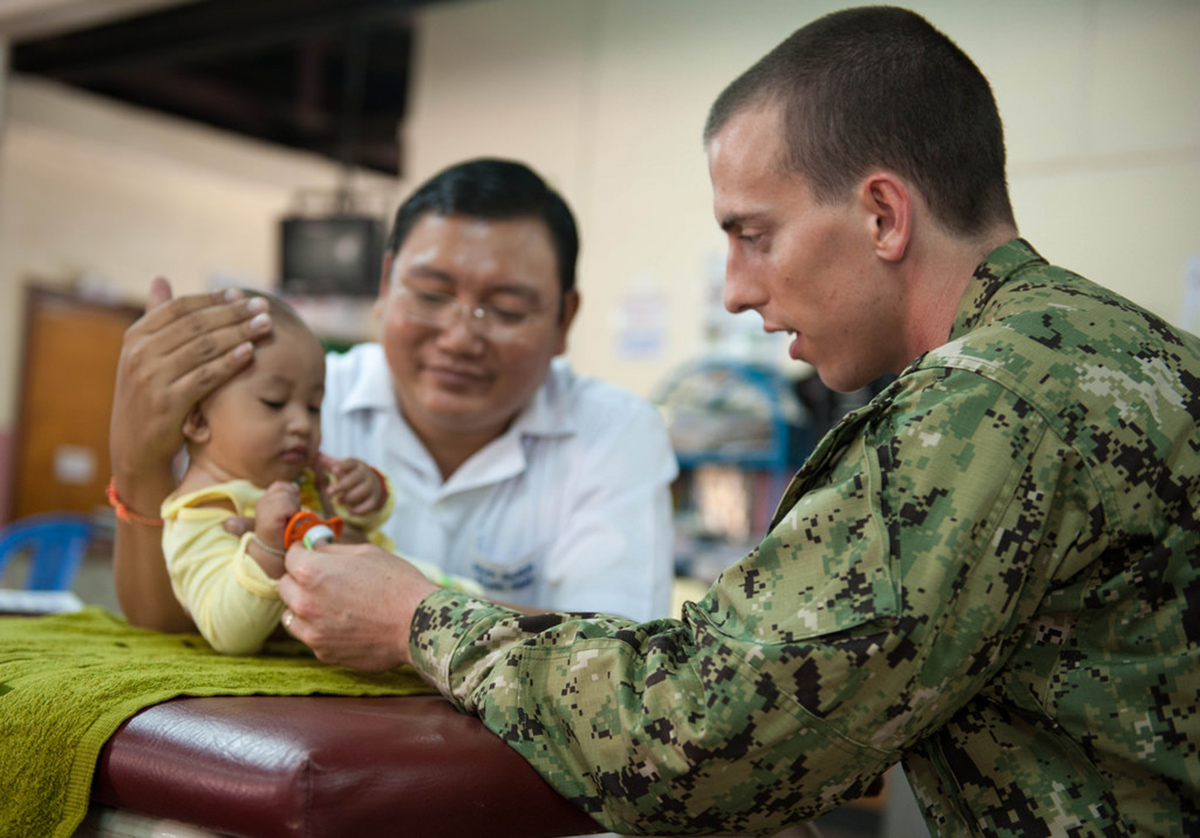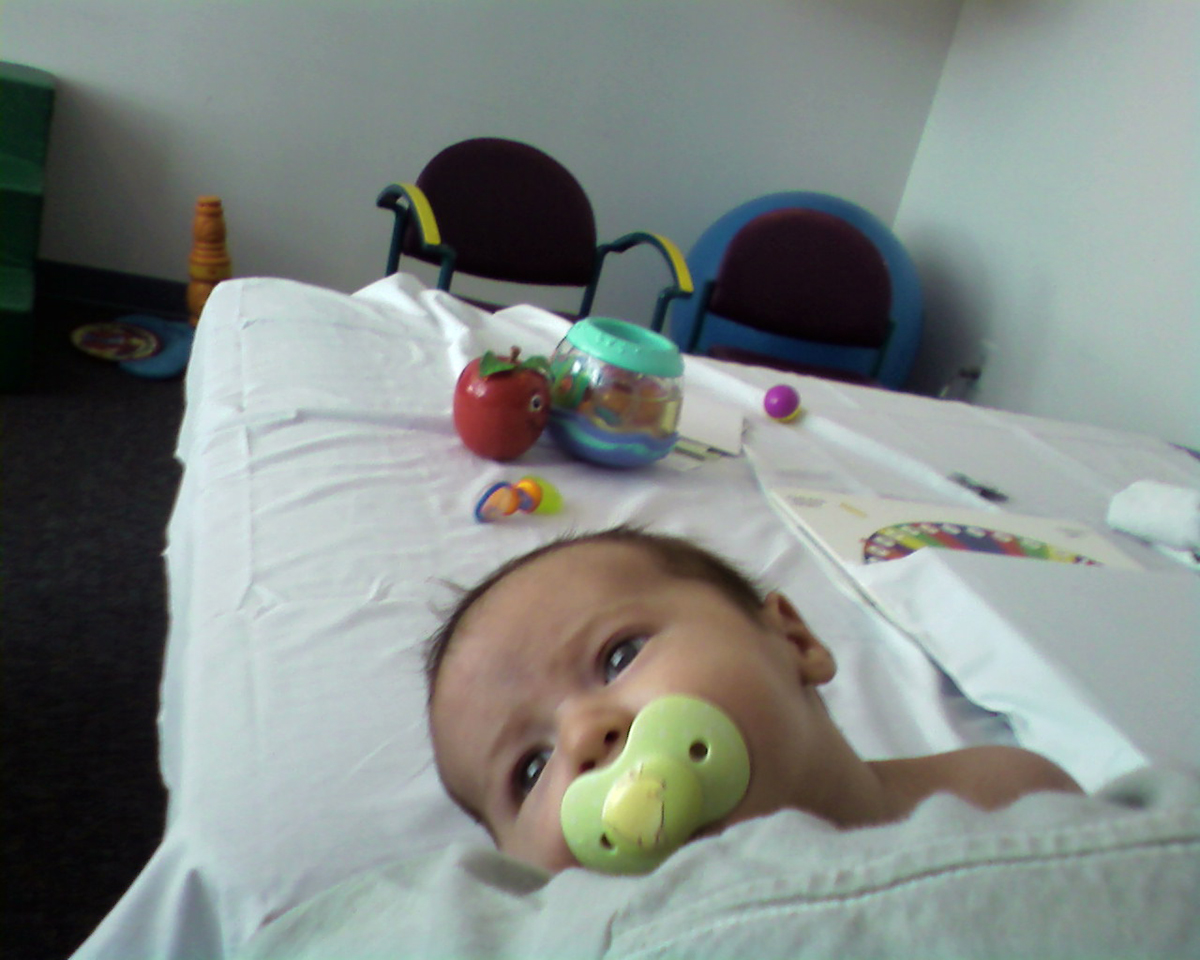Has your baby just been diagnosed with torticollis, or do you think you have noticed the tell-tale signs of this condition? It's important to know that the condition isn't usually painful and that it most often resolves with the help of exercises and changes in positioning. What else do parents need to know about wryneck in babies?
What Is Torticollis?
Torticollis, also called wryneck colloquially, means "twisted neck" in Latin — and that's basically exactly what it is. Torticollis can roughly be divided into two main categories: acquired and congenital. Torticollis that devlops later in life has a really wide variety of causes, from tumors and infections to certain medications and underlying medical conditions. If torticollis is present at birth or becomes apparent shortly thereafter, it's called congenital torticollis.

In congenital torticollis, a baby's neck will be twisted in one position, and their chin in the opposite direction. While torticollis can look disturbing, affected babies don't tend to experience pain from this condition. The condition affects boys and girls equally, and about one in 250 babies will experience it.
Though experts aren't fully certain what lies behind that, they have a very good idea about the risk factors. It is known that a shortened sternocleidomastoid muscle can occur as a result of strange positioning in utero or because of a difficult birth, for instance. Bleeding and scarring can trigger a shortening of the relevant muscle. Breech babies and those who required forceps to be born are more likely to develop torticollis, and 10 to 20 percent of those affected also have hip dysplasia.
More rarely, abnormalities in the neck bones, known as Klippel-Feil syndrome, can be the culprit in cases of congenital torticollis. The condition can also be hereditary or the result of uncommon underlying conditions including tumors of the brain or spinal cord. Because of torticollis, a signifcant number of those affected also develop plagiocephaly, a condition in which the baby's head has a flat spot or is misshapen — in this case due to laying in the same position all the time.
Torticollis: The Tell-Tale Signs
Severe torticollis is quite noticeable: if you don't notice that your baby's neck is titled to one side with the chin pointing to the other side, your pediatrician or the staff at your hospital will. A bump on one side of the neck is another tell-tale sign, along with limited mobility of the neck. Whether a baby is born with torticollis or develops it over time, it's almost always diagnosed within the first two months of life.
READ Are The Benefits Of Breastfeeding Really So Minimal That You May As Well Use Formula?
If you suspect your baby may have torticollis, you may notice:
- Your baby tilts their head to one side.
- Your baby strongly prefers to breastfeed on one particular side, if breastfed.
- Your baby cries when attempting to turn their head to the problematic side.
Torticollis In Babies: Diagnosis And Treatment
Diagnosing Torticollis

Treating Torticollis: Something That Can Usually Be Done At Home
Once diagnosed, your doctor will most probably suggest stretching exercises for you to complete at home with your baby. These exercises serve to strengthen the sternocleidomastoid muscle on the unaffected side, while loosening the one on the affected side. Treatment is necessary in order to ensure the baby's face and skull develop evenly, and the baby will develop the full range of neck motion. These exercises are simple in nature and involve you encouraging your baby to move their neck to the other side:
- Offering the non-preferred breast.
- Offering a bottle in such a way that encourages the baby to turn to their non-preferred side.
- Using toys to encourage your baby to look in both directions.
- Placing your baby to sleep in a way that encourages them to look at their non-preferred side. Babies want to see what's going on around them, so try to get them to twist their head to the weaker side in order to see you as you enter the room.
- "Tummy time" to strengthen your baby's neck muscles.
- Photo courtesy of SurfaceWarriors via Flickr: www.flickr.com/photos/navalsurfaceforces/14494218281
- Photo courtesy of ThrasherDave via Flickr: www.flickr.com/photos/dmatos/2832591681


Your thoughts on this